menu
It has been 20 long years of futility for the Philippines in the Olympics.
The last time a Filipino set foot on a podium was in 1996 in the Atlanta Games where boxer Mansueto "Onyok" Velasco took home the silver medal.
After Velasco, 62 other athletes have tried and failed to win a medal and when the 31st Olympics in Rio de Janeiro opens on August 5, 13 more aim to reverse the country's fortunes.
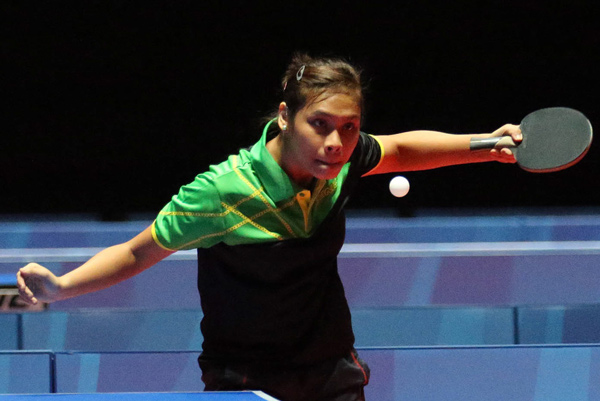
Ian “Yanyan" Lariba of table tennis will kick off the Philippine campaign in Rio.
Aside from being chosen as the country’s flag-bearer in the opening ceremony of the Games on Aug. 5, the reigning UAAP MVP from De La Salle is scheduled to play in the elimination round of the women’s singles the following day.
Lariba, the youngest from among the 12 Olympians at 21 years old, made history as the first Filipino table netter to qualify in the Games since the introduction of the sport during the 1988 Olympics in Seoul, South Korea.
The pride of Cagayan de Oro defeated Indonesia’s Lilis Indriani in four sets during the 2016 ITTF-Asian Olympic Qualification Tournament in Hong Kong last April to punch a ticket to Rio.
Prior to her Olympic trip, Lariba polished her skills in South Korea under renowned Korean coach Kwon Mi Sook and participated in the 2016 Asean University Games in Singapore a week before the July 23 departure of the Philippine delegation.
Lariba, this year’s UAAP Athlete of the Year and dean's lister majoring in BS Financial Management, led La Salle to the UAAP crown in Season 75 and Season 77 where she also captured the MVP plum on both occasions.
In boxing, the Philippines' bid lies with two pugs in the sport which last gave the country a medal.
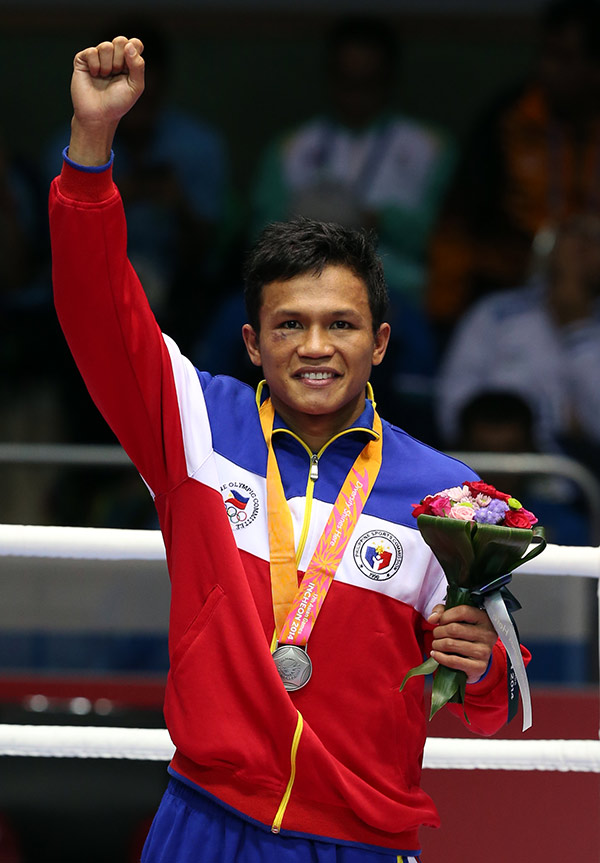
Charly Suarez knows the stakes are high but remains confident that a medal in the Olympics is possible.
An international amateur boxer for a decade, the lightweight from Panabo City aims to break a 20-year medal drought for the Philippines in the greatest sports gathering in the world.
The 27-year-old Suarez has a long list of inspiring credentials in making that claim.
He wound up champion in the 2013 World Series of Boxing, got a silver medal in the 2014 Incheon Asian Games and became a two-time gold-medal performer in the 2009 and 2011 Southeast Asian Games.
Suarez qualified to the Rio De Janeiro Games after beating Jun Shan of China via technical knockout in the semifinals of the 2016 Asia-Oceania Boxing Olympic Qualification Tournament last March.
He says part of the inspiration to finally win a medal for the country comes from the past performances of Filipino boxers in the Olympic ring.
The last four Filipino medalists in the regular Olympics were boxers with light flyweight Mansueto "Onyok" Velasco winning a silver medal in the 1996 Atlanta Games.
Presently training in the United States, Suarez enters the ring on Aug. 6 when he’s expected to survive the preliminaries and go all the way to the medal round until Aug. 16 at the Barra Da Tijuca, Riocentro-Pavilion.
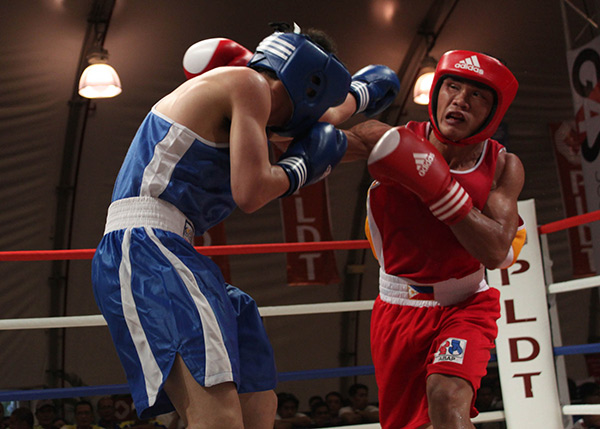
Meanwhile, boxer Rogen Ladon found it painful when he nearly qualified to the Rio De Janeiro Olympics only to miss the prize in the end.
Instead of losing hope, that bronze-medal finish in the 2015 Aiba World Championships made the 22-year-old from Bago City, Negros Occidental strive to accomplish more.
Ladon finally got the redemption he badly wanted when the light flyweight wound up second in the Asia-Ocenia Olympic Qualifying Tournament in Qian’An, China at the expense of India’s Devendro Singh Laishram.
Presently training in the United States with fellow boxer Charly Suarez, the crafty 5-foot-3 slugger opens his Olympic medal bid on Aug. 6 at the Barra Da Tijuca, Riocentro-Pavilion.
Ladon will use all the tricks and techniques he learned during his nine-year stint as an amateur boxer that produced silver medals in the 2015 Asian Elite Boxing Championships in Bangkok and Singapore Southeast Asian Games last year.
He vowed to give everything to surpass the achievements of fellow light flyweights Leopoldo Serrantes, Roel Velasco and Mansueto Velasco in the Olympics.
Serrantes and Velasco brought home bronze medals in the 1988 Seoul and 1992 Barcelona Olympics while Onyok Velasco had a silver in the 1996 Atlanta Games.
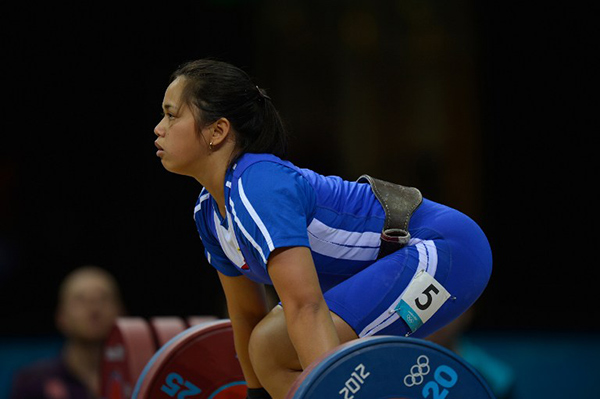
On her third consecutive Olympics, it will be a mature and more powerful lifter Hidilyn Diaz in the coming Rio De Janeiro Olympics.
Diaz saw her numbers rise when she began cutting down her weight, sliding from the heavier 56kg class to a slimmer 53kg category in weightlifting’s three events—the snatch, clean and jerk and total.
Carrying a lighter frame, the 25-year-old from Zamboanga City easily scooped three bronze medals in the International Weightlifting Federation World Championships in Houston, Texas late last year.
Diaz, the country’s flag-bearer during the opening ceremonies of the 2012 London Olympics, also brought home a silver medal and a pair of bronzes in the 2016 Asian Weightlifting Championships two months ago in Tashkent, Uzbekistan.
The previous year, she claimed the gold medals in all three events in the Asian championships held in Phuket, Thailand.
The IWF immediately noticed the vast improvement of Diaz, an Airman 2nd Class at the Philippine Air Force, in these tournaments and rewarded her a spot in the Rio Games on Aug. 5-21.
Diaz, who trained in Fujian, China for the Olympics, is targeting at least 219 kgs in the total to reach the podium in Rio, the same output of silver medalist Hsu Shu-Ching of Taipei and bronze performer Cristina Iovu of Moldova in the London Games.
So far, she’s been consistently lifting a total of 208 to 214kgs in her previous tournaments and ranks third in the world in the 53kg category.
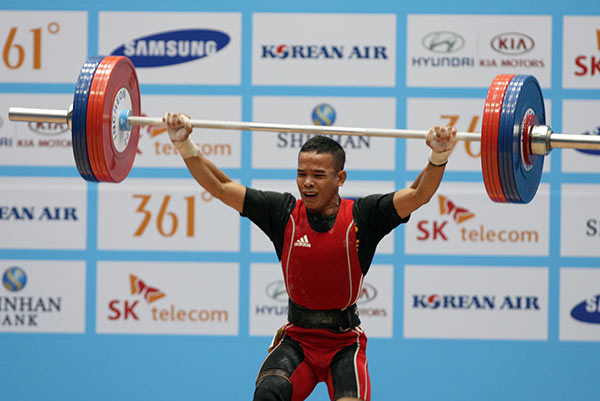
Nestor Colonia is the other weightlifter vying for a historic medal for the Philippines.
Since his early exit from the 2014 Incheon Asian Games, Colonia has never missed winning a medal in both global and continental competitions.
As a result, the International Weightlifting Federation didn’t think twice of granting a quota place for the 22-year-old weightlifter in the Rio De Janeiro Olympics.
Colonia, whose uncle Gregorio Colonia saw action in the 1988 Olympics, seized a bronze medal in the IWF World Championship in Houston, Texas last year with a 158-kilogram lift in the clean and jerk of the men’s 56kg category.
The national champion duplicated the bronze finish in the 2016 Asian Weightlifting Championship in Tashkent, Uzbekistan two months ago with a 148kg lift.
Colonia surprised everybody even his rivals when the Airman 2nd Class from the Philippine Air Force grabbed the gold in the same continental meet in 2015 held in Phuket, Thailand.
With a least 30 lifters from Europe banned by the IWF from participating in the Olympics due to doping, there’s a high probability that Colonia could sneak into the medal podium in Rio after consistently ranking fourth and fifth in the world.
Colonia hopes to lift at least 286kgs in the total (127 in the snatch, 159 in the clean and jerk) to be able to break the country’s medal drought since boxer Mansueto "Onyok" Velasco got a silver medal in 1996 Atlanta.
Three athletes will carry the Philippines' fight in athletics: Marathoner Mary Joy Tabal, hudlder Eric Cray and long jumper Marestella Torres-Sunang.
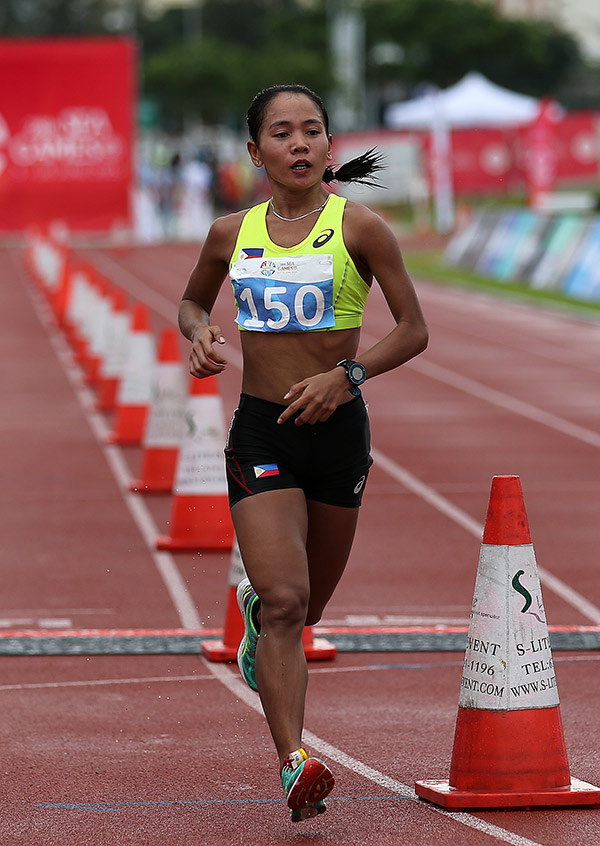
No Filipino woman has ever run the full marathon in the Olympics until Mary Joy Tabal came along.
The 26-year-old Cebuana qualified to the Rio De Janeiro Games on Aug. 5-21 after meeting the Olympic qualifying standard two months ago in the Scotiabank Ottawa Marathon, marked by the International Association of Athletics Federation as a gold label road race in Canada.
Tabal completed the 42.195-kilometer distance in 2:43.29, clearly running much faster than the 2:45 qualfiying mark for women’s marathon in the Olympics.
But her clocking alone in the Ottawa race wasn’t enough to earn her a ticket to Rio. The Philippine Amateur Track and Field Association said that Tabal has to become a part of the national team to run in the Olympics. She resigned from the Philippine team early this year.
Tabal’s corporate handler Motor Ace and coach John Philip Duenas had to cut a deal for the 2015 Southeast Asian Games silver medalist to get reinstated into the national athletics team.
Before her trip to Rio, the three-time Milo Marathon national champion trained at the Nippon Sport Science University in Yokohama, Japan to improve her time and at least come closer to the bronze-medal standard of 2:23.29 by Russian Tatyana Arkhipova in the 2012 London Games.
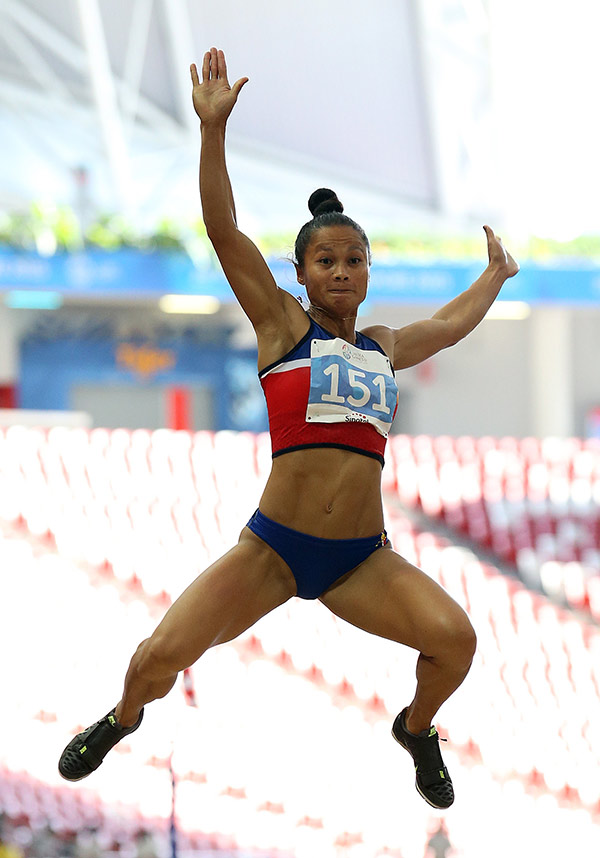
Long jump queen Marestella Torres-Sunang can efficiently respond to a challenge and be at the top of her game.
Initially stricken off the list of athletes bound for the Olympics, Sunang made it to Rio de Janeiro after surpassing the Olympic standard in the Kazakhstan Open Athletics Championships early this month.
Sunang was initially granted a Universality place by the International Association of Athletics Federation but lost the luxury to compete outright in the Rio Games after marathoner Mary Joy Tabal eased her out by hurdling the qualifying mark.
The former Asian champion responded with a 6.72-meter jump in her sixth and final attempt in Kazakhstan amid windy conditions to meet the 6.70m standard.
At 35 the oldest among the 12 Rio-bound Olympians, Sunang will be in her third straight Olympics just like lifter Hidilyn Diaz.
She also holds the Southeast Asian Games record of 6.71m achieved during the Palembang, Indonesia edition of the Games in 2011.
The road to Rio, however, wasn’t smooth for Sunang. The 2009 Asian championship gold medalist and four-time SEAG winner from San Jose, Negros Oriental had to rise from adversity after giving birth almost two years ago.
Far from her lethal form, Sunang could only land a bronze in the 2015 Singapore SEAG before slowly regaining her poise to punch an Olympic ticket just a week before the scheduled deadline set by the IAAF.
Sunang’s next challenge is to jump past the 6.80-meter mark in the Olympics on Aug. 16-17 at the Macarana Olympic Stadium for a fighting chance in the medal podium.
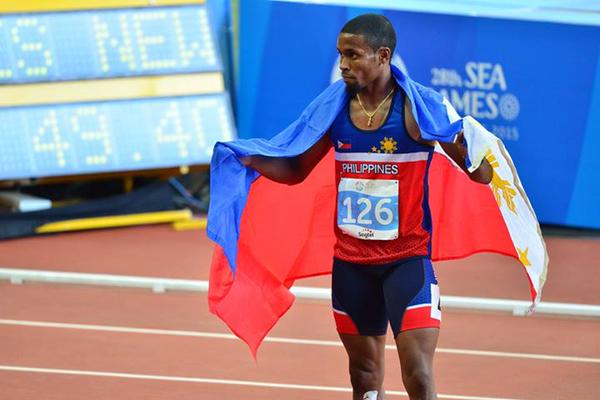
Hurdler Eric Shauwn Cray has been steadily improving as the centerpiece track and field competitions of the Rio De Janeiro Olympics move closer.
The fastest man in Southeast Asia erased his own national record in the men’s 400m hurdles by clocking a new personal best of 48.98 seconds in the IAAF World Challenge held in Madrid Spain last month.
Cray, 27, registered 49.12 seconds when the three-time All-American from San Antonio, Texas qualified to the Games as early as May 2015 during the Cayman Invite in Cayman Islands.
He pocketed the 400m gold twice in the Southeast Asian Games (2013 Burma and 2015 Singapore) and won the men’s 100m dash in record fashion for a double-gold performance in the biennial meet last year.
Before focusing on his Olympic training that began right after the Singapore SEAG, the Filipino-American Cray worked full-time as a salesman at Dillard’s, an upscale department store in the United States, to personally finance his training.
Cray was born in Olongapo City in Zambales to a Filipina mother and an American father. He has a degree in Education at Bethune-Cookman University and a master’s degree in Human Relations at University of Oklahoma.
The recent performance of Cray pushed him closer to the bronze-medal time of Puerto Rico’s Javier Culson (48.10) in the 2012 London Games.
Cray’s progress will be put to the test at the Macarana Olympic Stadium in Rio during the heats beginning Aug. 15.
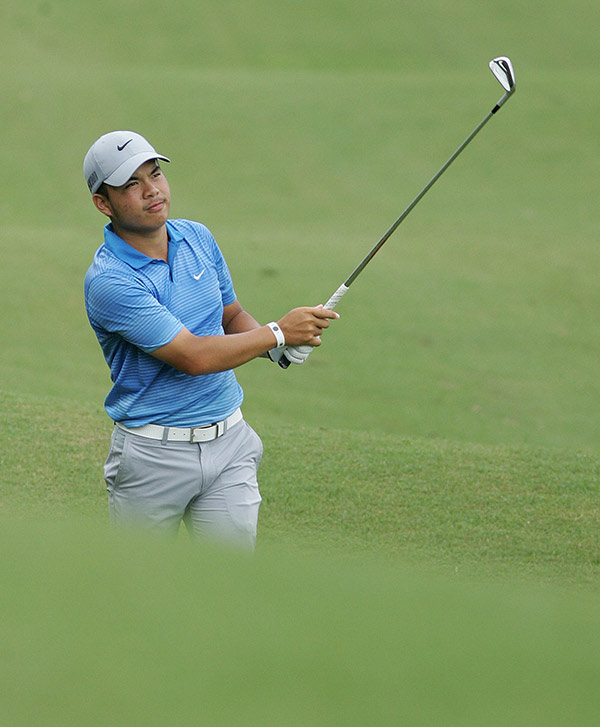
Another youngster holds the country’s hopes in golf.
At 21 years old, Miguel Luis Tabuena doesn’t feel intimidated playing with the best professional golfers on the world stage.
In fact, the 2015 Philippine Open Champion has gotten used to it after he earned an invitation from the US Open last month in Oakmont, Pennsylvania.
Tabuena, a regular fixture in the Asian Tour since 2011, qualified to the Rio De Janeiro Olympics on Aug. 5-21 after landing 38th in the top 60 of the men’s world rankings.
Another Filipino golfer, Angelo Que, wound up 59th in the rankings but opted out of the Olympics, citing health risks due to the proliferation of the Zika virus in Rio.
The virus triggered the exodus of the world’s top golfers from the Games such as No. 1 Jason Day of Australia, Rory McIlroy of Ireland, Marc Leishman of Australia, Shane Lowry of Ireland and Vijay Sing of Fiji, among others.
Tabuena is the youngest among the 12 Rio-bound Olympians together with Ian Lariba of table tennis. Lariba and Tabuena were both born on Oct. 13, 1994.
He’s also a regular on the Philippine Golf Tour where the 2010 Asian Games silver medalist won seven times.
Tabuena, who will open his Olympic campaign on Aug. 11 at the Barra Da Tijuca Golf Course, was awarded 2016 Athlete of the Year by the Philippine Sportwriters Association, sharing the accolade with professional boxers Donnie Nietes and Nonito Donaire.
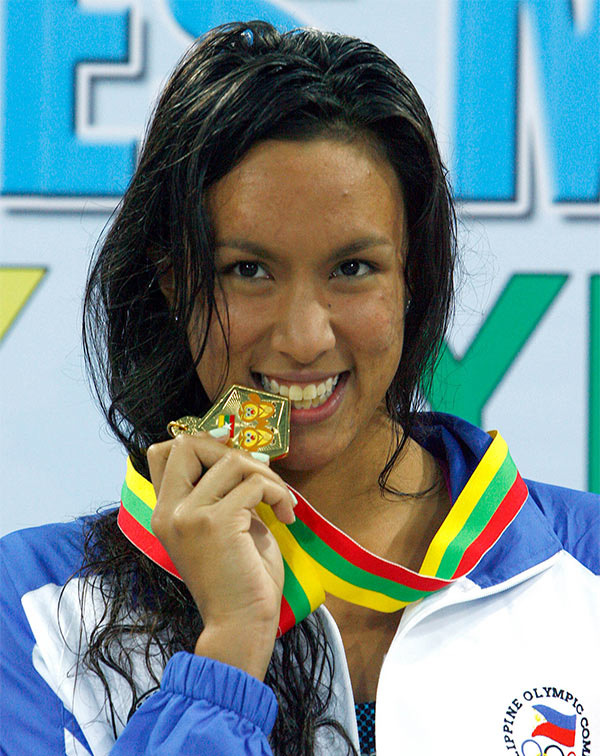
Familiar faces will be swimming for the medal for the Philippines in the Rio Olympics.
Jasmine Alkhaldi will again swim on the same pool with the finest swimmers in the world in Rio De Janeiro.
The 23-year-old made it to Rio after her 55.94-second clocking in the 100m freestyle entitled her to a Universality place, which was acknowledged and confirmed by the International Swimming Federation or Fina.
Alkhaldi, born in Paranaque to a Filipino mother and a Saudi Arabian father, holds the Philippine women’s record in the 100m, 200m and 50m freestyle along with the 100m and 50m butterfly events.
She brought home two bronze medals in the 100m freestyle and butterfly during the 2013 Southeast Asian Games in Burma and six bronzes in the 2015 Singapore edition, three of them in the 100m, 200m and 50m freestyle events.
In the 2012 London Games, Alkhaldi clocked 57.13 in the 100m free, placing 34th out of 50 swimmers.
The University of Hawaii alum intends to improve her time and break the national record anew during the Rio swim competitions starting Aug. 6at the Barra Da Tijuca Olympic Aquatics Course.
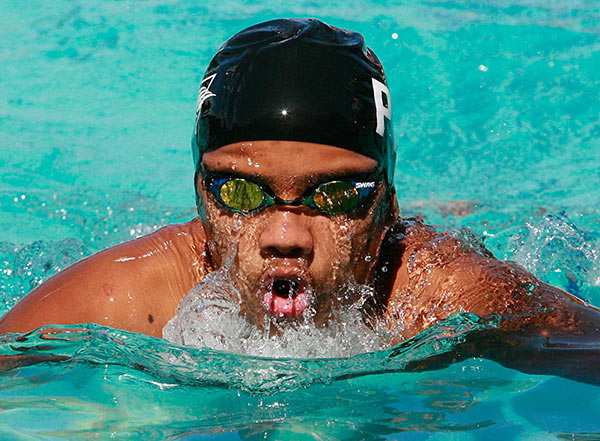
Marked as the fastest Filipino swimmer, Jessie Khing Lacuna will bring his act anew against the world’s best in the Rio De Janeiro Olympics.
The 23-year-old from Pulilan, Bulacan was granted a Univesality place to the Aug. 5-21 Games after his 3:55.34 clocking in the men’s 400m freestyle passed the standards of the International Swimming Federation or Fina.
Lacuna’s time in the event is the current national record that the Ateneo alum had set in the 2015 Southeast Asian Games in Singapore. He also holds the national record in the 100m butterfly (55.08 seconds) accomplished during the 2013 SEAG in Burma.
Just like Alkhaldi, Lacuna will be in his second straight Olympics after racing in the 200m free during the 2012 London Games.
He’s the most bemedaled junior swimmer of his time, winning a total of 51 gold medals, 16 of them at the international level.
Lacuna pocketed two bronze medals in the 200m fly and 200m individual medley during the Singapore SEAG.
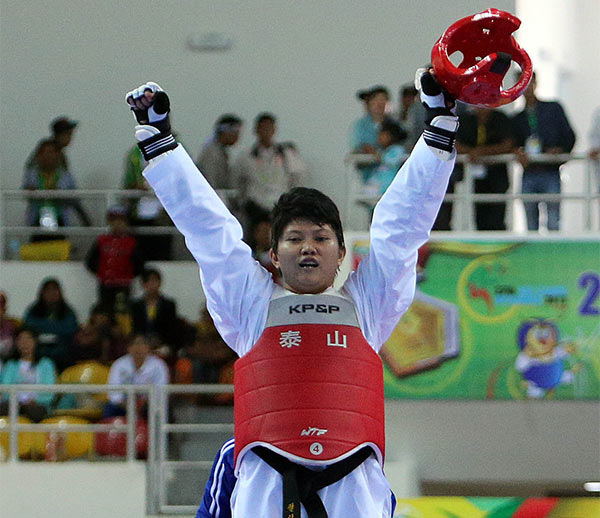
Taekwondo jin Kirstie Elaine Alora is bracing for the toughest competitor in her weight class in the Rio De Janeiro Olympics.
The three-time Southeast Asian Games champion has been marked to face Mexican Maria Espinosa, the No.1 contender in the women’s +67kg category, in the first round of the taekwondo competitions on Aug. 20 at Barra Da Tijuca.
Espinosa bagged the gold medal in the 2008 Beijing Games and placed third in 2012 London.
Alora, 26, qualified to the Rio Summer Games after pulling off a monumental upset past Asian champion Akram Khodabandeh of Iran.
Khodabandeh stands 5-foot-10, four inches bigger than Alora, who had frustrated more athletic and much taller rivals in the past.
Alora, who grew up in Binan, Laguna, holds a degree in BSBA Export Management from the College of St. Benilde and coaches the La Salle Greenhills taekwondo team outside of her national team duties.
A bronze medalist in the 2010 Guangzhou and 2014 Incheon Asian Games, she won the SEAG gold thrice—2005 Manila, 2011 Indonesia and 2013 Burma.
There's no greater call for an athlete than to take part in the world's grandest sporting stage and for the 12 Filipinos, upon whose shoulders a nation's hope rests, there's no greater honor.